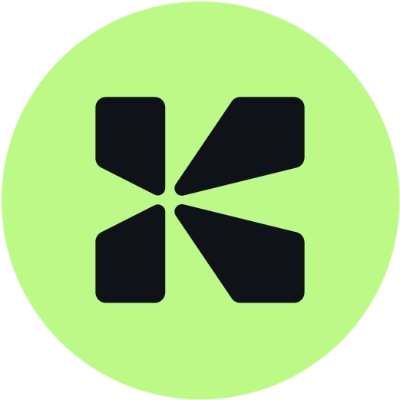
Kuru

거래소 수수료
입금 방식
지원 암호화폐 (0)
Kuru Review
What is Kuru?
Kuru is a fully on-chain decentralized exchange (DEX) built on the Monad blockchain, featuring a central limit order book (CLOB) architecture. It enables users to create trading wallets, deploy new vaults (markets), research, and trade crypto spot assets—all directly on-chain.
Is Kuru safe?
- On-chain transparency: Trades happen on-chain via Monad, enabling full transparency, auditable order books, and decentralization.
- Audit commitment: Each market displays an “Audit” label, although specific audit reports aren’t publicly linked .
- Reputable backers: Backed by major investors like Electric Capital, CMS Holdings, Brevan Howard Digital, Breed, and Velocity Capital, which lends credibility.
Pros & cons of Kuru
Pros
- Fully on-chain, transparent CLOB via Monad.
- Users can launch their own vaults/markets and earn fees.
- Institutional-grade backers and $2 M seed funding for trust.
Cons
- Still early-stage, often showing zero liquidity or trading volume in many markets.
- Limited to spot trading—no derivatives, margin, or advanced order types yet.
- Lack of detailed audit reports publicly accessible.
Kuru Lite vs Kuru Pro: Which Experience Is Right for You?
Kuru offers two distinct user interfaces to serve different types of traders: Lite for simplicity and Pro for power. Whether you're a newcomer to DeFi or an advanced trader looking to create markets, Kuru adapts to your needs. Here's a breakdown of the key differences:
|
Feature |
Kuru Lite |
Kuru Pro |
|
Target Audience |
Casual users, fast onboarding |
Power users, active traders, market makers |
|
UX Focus |
Simple, minimal, easy to navigate |
Full-featured interface with advanced trading tools |
|
Wallet Requirement |
Privy-connected social wallet (non-custodial, easy) |
Direct wallet integration (e.g., MetaMask, Rabby) |
|
Vault Interaction |
View, swap, and place simple trades |
Create vaults, adjust liquidity, advanced order types |
|
Trading Tools |
Basic buy/sell with market info |
Full order book, trading charts, custom vault config |
|
Customization |
Prebuilt markets only |
Launch your own markets, manage vault parameters |
|
Revenue Options |
None |
Vault creators can earn trading fees |
|
Accessibility |
No technical setup needed |
Requires knowledge of DeFi mechanics and wallets |
Kuru fees explained
Fees are associated with creating vaults and trading, with vault creators eligible to earn fee revenue. While exact fee structures aren’t publicly published, the model allows vault creators to “earn on fees”.
Kuru supported cryptocurrencies
Kuru supports any token deployed on the Monad blockchain, with no fixed token list. The main trading pair is MON (the native Monad token), and other supported assets include gMON (a liquid staking derivative) and custom tokens created by users. Anyone can mint a new token and launch a market for it using Kuru’s vault system, so supported cryptocurrencies are entirely permissionless and depend on what’s deployed and traded by the community.
How Kuru works
- Connect wallet (e.g., via Privy).
- Create a trading wallet & optionally initialize a vault (market).
- Deposit or list tokens to build liquidity.
- Trade using on-chain limit/market orders via CLOB.
- Vault creators earn trading fees, and all activity remains on-chain.
Kuru packages
Kuru does not offer tiered account packages like centralized exchanges. Instead, the platform provides equal access to all users. The main differentiation lies in whether or not you create a vault: vault creators gain fee revenue privileges, while traders just participate in existing markets.
Kuru trading options
- Spot trading only (via CLOB).
- No derivatives, margin, or perps at launch. Vault creators select token pairs; traders pick desired vaults and place orders.
Kuru trading fees
- Fees are likely split between vault creators and possibly the protocol.
- Exact trading fee rate unspecified on public materials.
- Vaults advertised as “juicy fees” to incentivize market creation.

Kuru withdrawal fees
- All actions are on-chain; consequently, withdrawals/settlements are wallet-to-wallet and involve only blockchain transaction (gas) fees.
- No platform-imposed withdrawal fees are apparent from docs or site.
Kuru deposit methods & fees
- There’s no fiat on-ramp; deposits are done by transferring tokens to your connected wallet.
- Fees are solely network/gas costs tied to Monad. No additional deposit fees noted.
Final thoughts
Kuru is an ambitious on-chain DEX that leverages Monad’s high-throughput chain and CLOB design to let users launch markets with full transparency. It offers a powerful alternative to AMM DEXs for developers and advanced traders. With $2 M in seed funding led by Electric Capital and solid backing, it’s off to a promising start. But, as a nascent platform, liquidity remains sparse, fee details and audits are undisclosed, and complexity may challenge mainstream users.
Best for: builders, early adopters, and traders seeking on-chain order book trading.
Not ideal for: casual retail users seeking simple interfaces, fiat support, deep liquidity, or advanced trading products.


